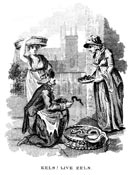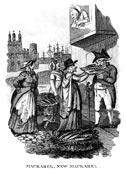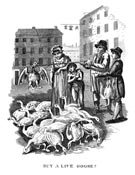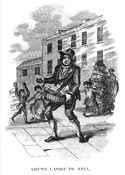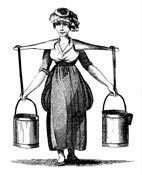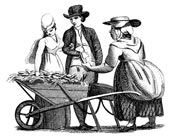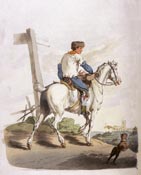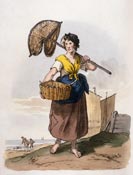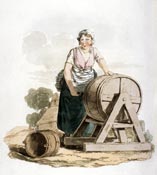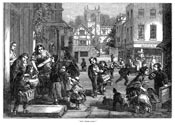
Once the main ways of buying provisions and services was from street markets or hawkers. When Collections was a lad in Ireland the milkman and the bread man used to turn up every day, the fish man once a week, the sweep once a year. To this day, in our part of North London, the fish man cometh every Tuesday lunchtime, though in a nice Mercedes van. Two hundred years ago London teemed with hawkers who did their rounds with their goods in baskets or on barrows. As there was a limit to what they could carry they usually confined their wares to a single thing – strawberries, sprats, cucumbers, toys, muffins, onions, baskets, cooking utensils, oysters even. There were also sweeps and tinkers and people who collected old clothes and hats, and news vendors who shouted out the headlines, and watchmen who bellowed the time. You name it. It was all competitive and loud so to announce their arrival they each had their own distinctive cries. You can still hear them in street markets and sometimes when the scrap metal men pass by.
London’s hawkers and their street cries were so famous that they caught the attention of artists and engravers. Hogarth’s Shrimp Girl is probably the most famous painting (look on Google images!), but Francis Wheatley’s series of twelve painted between 1792 and 1795 were exhibited at the Royal Academy and immensely popular as engraved prints, as were those of Rowlandson and Ackermann. There are ‘Cries of London’ plates, playing cards, place mats, chocolate boxes and monstrous tourist figures still being made. The hawkers were certainly very interesting folks but Collections is not taken in by the romanticised pictures that have come down to us. These men and women were a necessary but notorious bunch of cheats and we certainly can’t believe the girls were all so incredibly fetching. Still, we do like Isaac Taylor who does seem to have been an honest man. His hawkers do look dodgy and his children are the most convincing we have seen in any illustrations of the period. All these come from the EFDSS library.


